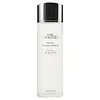What's inside
What's inside
 Key Ingredients
Key Ingredients

 Benefits
Benefits

 Ingredients Side-by-side
Ingredients Side-by-side

Saccharomyces Ferment Filtrate
HumectantBifida Ferment Lysate
Skin ConditioningWater
Skin ConditioningDiethoxyethyl Succinate
SolventNiacinamide
SmoothingHordeum Vulgare Extract
EmollientCassia Alata Leaf Extract
AstringentGlycerin
HumectantDipropylene Glycol
HumectantDimethicone
EmollientPolyquaternium-51
Skin Conditioning1,2-Hexanediol
Skin ConditioningAdenosine
Skin ConditioningLecithin
EmollientLactic Acid
BufferingAcetic Acid
BufferingPhenoxyethanol
PreservativePotassium Sorbate
PreservativeSaccharomyces Ferment Filtrate, Bifida Ferment Lysate, Water, Diethoxyethyl Succinate, Niacinamide, Hordeum Vulgare Extract, Cassia Alata Leaf Extract, Glycerin, Dipropylene Glycol, Dimethicone, Polyquaternium-51, 1,2-Hexanediol, Adenosine, Lecithin, Lactic Acid, Acetic Acid, Phenoxyethanol, Potassium Sorbate
Ingredients Explained
These ingredients are found in both products.
Ingredients higher up in an ingredient list are typically present in a larger amount.
1,2-Hexanediol is a synthetic liquid and another multi-functional powerhouse.
It is a:
- Humectant, drawing moisture into the skin
- Emollient, helping to soften skin
- Solvent, dispersing and stabilizing formulas
- Preservative booster, enhancing the antimicrobial activity of other preservatives
Dipropylene Glycol is a synthetically created humectant, stabilizer, and solvent.
This ingredient helps:
Dipropylene glycol is technically an alcohol, but it belongs to the glycol family (often considered part of the ‘good’ alcohols). This means it is hydrating and gentle on skin unlike drying solvent alcohols like denatured alcohol.
As a masking agent, Dipropylene Glycol can be used to cover the smell of other ingredients. However, it does not have a scent.
Studies show Dipropylene Glycol is considered safe to use in skincare.
Learn more about Dipropylene Glycol